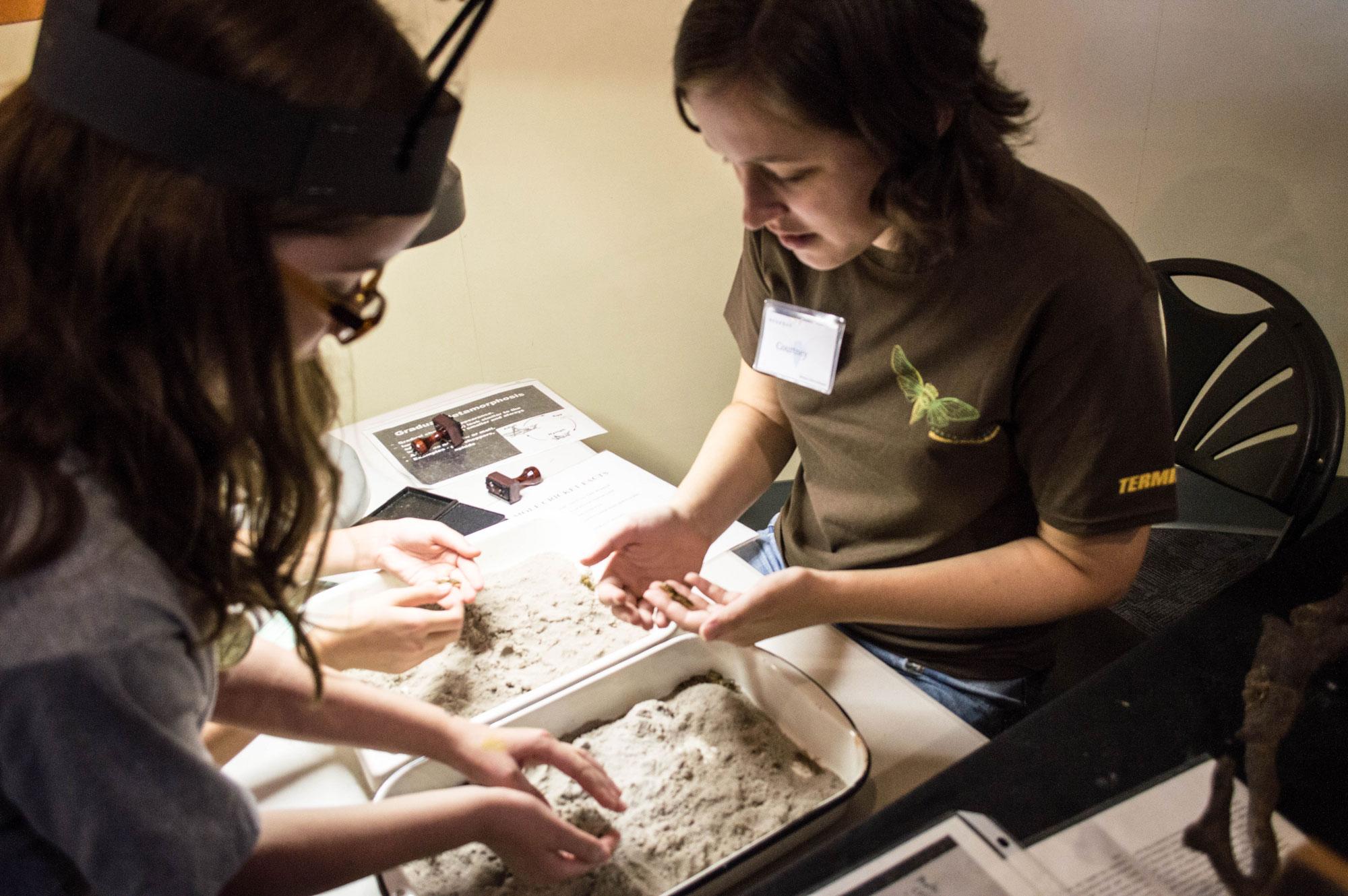More than 30,000 people crowded into downtown Raleigh this weekend at the Museum of Natural Sciences for Bug Fest, an annual event dedicated to the celebration, appreciation and scientific nature of insects.
This year’s special theme was cicadas, both for display and for Café Insecteca, where free, bug-inclusive dishes were available to visitors.
The event featured “buggy” displays, presentations and an evening “Insectival” for nocturnal bugs and live music, said Jack Leff, a senior biology major at Appalachian State University.
Wade Harrell, owner of the Harrell House Bug Museum in Santa Fe, New Mexico, visited for Bug Fest and hosted a booth titled “Scorpions and Other Arachnids.”
Ultraviolet lights accompanied the displayed arachnids, whose exoskeletons glowed under UV lights, Harrell said.
“No one is sure why some scorpions glow under UV light,” Harrel said. “It may just be another side effect of the components of their exoskeleton, or they might just have the need to retain moisture in some of their other habitats and the natural water proofing in their skin just happens to be fluorescent.”
Scorpions use venom to catch prey and defend themselves, but most are not dangerous to people, Harrell said.
“There’s over 20,000 kinds and only 25 of them are considered dangerous,” Harrell said. “There is a five-tail scorpion, native to Africa. It’s not the strongest of any species, but it’s common and injects a lot of venom when it stings — so it’s responsible for more deaths.”
Harrell said the Arizona bark scorpion is the only kind that is dangerous in the U.S., out of 50 species.
The Bug Fest meal section of the festival was incredibly popular, with crowds waiting for over two hours to consume dishes like arthropod chocolate chip cookies.
Zack Lemann, the manager of Animals and Visitor Programs at the Audubon Butterfly Garden and Insectarium in New Orleans, Louisiana, served meals to the crowd and created special demonstrations for the “Insectival,” including a cicada shishkabob with teriyaki sauce and onions. Crickets are the chef’s “favorite thing to eat.”
“I knew that because we expected thousands of people at Bug Fest this year that I would need some of the farm raised stuff in short order,” he said. “I wanted something special, so I had colleagues out of state collect periodical cicadas for me. In Louisiana where I’m from, I got a some dragonflies for us, which I fry and put on sauteed portobello mushrooms with dijon soy butter to make what I call that an ‘ordonate ordourve.’”
Lemann has been cooking bugs for about 18 years.
“I started in 1997,” he said. “At [the Audubon Butterfly Garden] right now there is an area called ‘Bug Appetite.’ We serve edible insects every day that we’re open.”
There is nothing wrong with eating bugs, said Lemann. The consumption of insects provides a wide range of environmental, nutritional, agricultural and gastronomic benefits.
“There’s certain bugs that are delicious,” Lemann said. “So why not expand your pallet with other good food? There is an environmental aspect to this too. Bugs are able to convert the food they eat into edible matter for us–better than animals like pigs and cows.”
Raleigh local Philip McDonald attended Bug Fest to sell butterfly displays, a hobby that turned profitable for the retired bug fan.
“I retired and needed something and I have been catching butterflies for over 50 years,” McDonald said. “I had this idea to put them in displays and sell them.”
Capturing butterflies is a gentle business, he said.
“I capture the butterflies with a net and for the moths I go out late at night–they have compounded eyes so they can get blinded from a light at night,” he said. “I get them off the ground as they fall down. You have to get up really early for moths– around 3 a.m.”
Story by: Kelsey Hamm, A&E Editor

